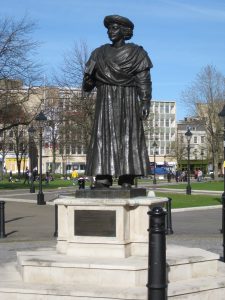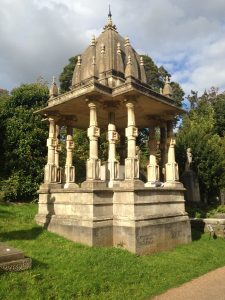Our new colleague Dr Sumita Mukherjee looks at the place of Bristol city and university in the modern history of South Asian migration:
David Olusoga’s BBC2 programme Black and British: A Forgotten History has brilliantly demonstrated the ways in which peoples of African descent have been living in Britain since the Roman times, how they have been part of the fabric of British life and society for centuries, how migration and multiculturalism are not twentieth-century phenomena.
It should go without saying that just as men and women of African descent have lived and played their part in British history for centuries, so have men and women from Asia, including men and women from the Indian subcontinent. Much of my research has focused on Indian men and women who came to Britain in the nineteenth and early twentieth century, before the more large-scale migrations of the post-war era.
A study of the effects of such migrations could focus on the city of Bristol. Bristol has many long-standing connections with Indian men and women. These links are publicly noted in College Green with the statue of Indian reformer Rammohan Roy. He came to Britain in 1831, was present at King William IV’s coronation, and politicians and philosophers such as Jeremy Bentham, Thomas Macaulay and Robert Owen all clamoured to meet with him. He was a vocal champion of women’s rights, and human rights more broadly.

Rammohan Roy statue at College Green, Bristol. Original image & CC licence here.
In 1833, staying in Bristol with Minister Lant Carpenter and his daughter, Mary, Roy died of suspected meningitis. He was buried in Bristol. A few years later, Dwarkanath Tagore, the father of Nobel Laureate Rabindranath Tagore, shifted Roy’s grave to Arnos Vale and erected a monument; Roy’s tomb at Arnos Vale Cemetery is grade 2 listed, a tourist attraction and remains a site of commemoration for members of the Brahmo Samaj, the reformist group he founded.

Image of Rammohan Roy tomb at Arnos Vale (author’s own image).
Mary Carpenter moved to Red Lodge after the death of Roy, and it was there that she hosted, Keshub Chunder Sen, another Brahmo Samaj reformer, on his tour of England in 1870. Carpenter tried to make Sen comfortable by preparing ‘curry and rice’ for him in her Elizabethan drawing room, and together they formed the ‘National Indian Association’, first in Bristol (September 1870) and then in London (1871), as a place for Indian visitors to meet like-minded British people and to discuss reform issues.
Bristol was eulogised by many Brahmo Samajists and so Mary Carpenter hosted many other Indian visitors in the nineteenth century who came to pay their respects at Roy’s grave, and to build networks among like-minded reformers. They include Sasipada Banerji, whose son was born on 10 October 1871 at Carpenter’s house and named Albion, after his birth place. The family returned to India in 1872, but Albion came back later to Britain to study at Oxford.
Indeed, in the early twentieth century, the largest foreign student body at British universities were Indian students. Many Indians were encouraged to visit Britain to pursue higher education, having been educated in institutions in India that were modelled on British schools and colleges. In the academic year 1930-1, Bristol University had 28 Indian students. As John Reeks has discovered, one of those students, Man Mohan Singh, attempted to be the first Indian to fly from England to India in 1930. He was unsuccessful.
Another noteworthy example is Sukhsagar Datta, who came to Britain in 1908. He married Ruby Young in 1911, and joined the University of Bristol Medical School in 1914, qualifying as a doctor in 1920. He first worked at the Bristol General Hospital, and eventually the Stapleton Institution (now called Manor Park Hospital) until his retirement in 1956. Datta joined the Labour Party in 1926 and became chair of Bristol North Labour Party in 1946.
Bristol continued to host, and became home, for many more men and women of Indian origin. Many of these stories have yet to be uncovered; their names are hidden in censuses, their faces obscured in photos. Their stories are interwoven with other migrant groups, and together they have shaped the architecture and history of Bristol and Britain.


